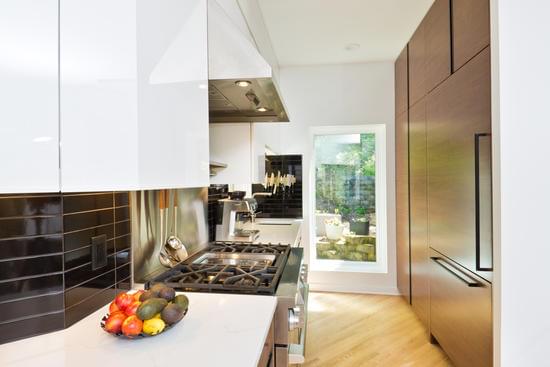Are you wondering how to calculate a home improvement loan? Understanding the ins and outs of this process can help you make informed decisions about financing your home improvement project. From assessing your needs to determining repayment plans, there are several factors to consider when calculating a home improvement loan. This complete guide will walk you through the essential steps to help you navigate the loan calculation process with confidence.
When it comes to embarking on a home improvement project, many homeowners turn to home improvement loans as a way to finance their renovations. These loans serve the purpose of providing the necessary funds for repairs, upgrades, or expansions to enhance the value and comfort of your home. With different types of home improvement loans available, each with its own features and benefits, it’s important to understand how these loans work before diving into any calculations.
To accurately determine the loan amount needed for your home improvement project, it is crucial to assess your specific needs and calculate the estimated cost of the renovation. Whether it’s identifying areas of improvement in your home or factoring in additional costs such as labor and materials, taking these initial steps plays a significant role in ensuring that you request an appropriate loan amount for your project.
Assessing Your Home Improvement Needs
When considering a home improvement project, it’s essential to start by identifying the areas in your home that require renovation or upgrades. This could include anything from remodeling the kitchen or bathroom to adding a new room or improving the outdoor living space. By making a list of the specific areas that you want to improve, you can better understand the scope of the project and determine the estimated cost.
Once you have identified the areas for improvement, the next step is to calculate the estimated cost of the home improvement project. This involves breaking down the costs into categories such as materials, labor, and any additional expenses like permits or professional design services. By creating a detailed budget for each aspect of the project, you can get a clearer picture of how much funding you will need to complete your home improvement plans.
To assist in this process, consider using an itemized list or spreadsheet to capture all anticipated expenses. You may also want to consult with contractors or professionals in each area of improvement to get accurate cost estimates. And don’t forget to factor in some contingency funds for unexpected expenses that may arise during the course of your home improvement project.
Understanding Loan Terms and Interest Rates
When considering a home improvement loan, it is important to understand the different loan terms and interest rates that may be available to you. Loan terms can vary between fixed and adjustable rates, and the choice between the two can have a significant impact on your overall loan amount.
Fixed-rate loans are characterized by a stable interest rate for the entire duration of the loan, providing predictability and consistency in your payments. On the other hand, adjustable-rate loans may offer lower initial interest rates but can fluctuate over time, potentially resulting in higher payments.
Interest rates also play a crucial role in determining the total cost of your home improvement loan. Even a small difference in interest rates can lead to significant variations in the total amount paid over time. It is essential to carefully analyze and compare interest rate offers from different lenders before making a decision. Additionally, understanding how interest rates will affect your monthly payments and the overall repayment amount is vital for making informed choices about your home improvement financing.
Furthermore, borrowers should consider how their personal financial situation may change over time when selecting between different loan terms and interest rate options. By taking into account factors such as future income prospects and potential changes in household expenses, individuals can make more strategic decisions regarding their preferred loan terms. Ultimately, having a comprehensive understanding of loan terms and interest rates will empower borrowers to select a financing option that aligns with their long-term financial goals.
| Loan Term | Interest Rate |
|---|---|
| Fixed-Rate | Stable for entire duration |
| Adjustable-Rate | Potentially fluctuating over time |
| Impact on Total Cost | Even small differences can result in significant variations |
Calculating Your Loan Amount
When it comes to calculating the loan amount needed for your home improvement project, there are a few important factors to consider. By following these steps, you can ensure that you have a clear understanding of your financial needs before applying for a home improvement loan.
To calculate your loan amount, follow these steps:
- Identify the specific areas of improvement in your home: Before determining the loan amount needed, make a list of all the areas in your home that require improvement. This could include renovations for the kitchen, bathroom, outdoor space, or any other part of your home.
- Calculate the estimated cost of the home improvement project: Once you have identified the areas that need improvement, research and estimate the cost of materials and labor required for each project. Factor in any additional costs such as permits or inspections to get an accurate estimation of the total expenses.
- Use a home improvement loan calculator to determine the loan amount needed: Many online tools and calculators allow you to input the estimated cost of your project, along with other relevant information such as desired loan term and interest rate. These tools can then provide you with an estimate of the total loan amount needed for your home improvement project.
Once you have determined the loan amount needed for your project, it’s important to factor in additional costs such as labor and materials. By taking these steps and utilizing available resources, you can accurately calculate your loan amount and be better prepared to move forward with securing financing for your home improvement project.
Determining Your Repayment Plan
Once you have assessed your home improvement needs and calculated the loan amount required, the next step is to determine your repayment plan. This involves evaluating different options for repaying the loan, considering factors such as interest rates, monthly installments, and total loan duration.
One option for repayment is through monthly installments, where you pay a fixed amount each month until the loan is fully repaid. Another option is to make lump sum payments at specific intervals, which may be more suitable for those with irregular income or large windfalls at certain times of the year.
It’s important to carefully consider the impact of each repayment plan on the overall cost of the loan. While a longer repayment period may result in lower monthly payments, it also means paying more in interest over time. On the other hand, a shorter repayment period may mean higher monthly payments but less interest paid overall.
| Repayment Plan Option | Impact on Total Loan Cost |
|---|---|
| Monthly Installments | Lower monthly payments but more interest paid over time |
| Lump Sum Payments | Higher monthly payments but less interest paid overall |
Regardless of which repayment plan you choose, it’s essential to budget effectively. Understanding your financial situation and planning for loan payments alongside regular expenses will help ensure that you can comfortably meet your financial obligations while pursuing your home improvement project.
Budgeting for Home Improvement Loan Payments
When it comes to embarking on a home improvement project, budgeting for loan payments is a crucial step in the planning process. Whether you’re considering a kitchen renovation, bathroom remodel, or a complete home makeover, being able to manage your loan payments alongside your regular expenses is essential for a stress-free experience.
Creating a Budget
Before jumping into any home improvement project, it’s important to sit down and create a comprehensive budget that includes not only the anticipated cost of the project, but also the monthly loan payment. Start by evaluating your current financial situation and determining how much you can comfortably afford to allocate towards your home improvement loan each month.
Tips for Managing Finances
To effectively manage your finances during a home improvement project, consider using tools such as budgeting apps or spreadsheets to track your income and expenses. Look for areas where you can cut back on spending to allocate more funds towards your loan payments. Additionally, consider setting up automatic transfers from your bank account to ensure that your loan payments are made on time each month.
Planning for Unexpected Costs
In addition to budgeting for your monthly loan payments, it’s important to set aside some funds for unexpected costs that may arise during the course of the home improvement project. Whether it’s uncovering unforeseen issues during renovations or needing additional materials, having a financial cushion can help alleviate stress and ensure that your project stays on track.
By carefully planning and managing your finances throughout the entire process, you can enjoy a successful and manageable home improvement project without causing undue strain on your wallet.
Applying for a Home Improvement Loan
When you have carefully assessed your home improvement needs and determined the estimated cost of the project, the next step is to apply for a home improvement loan. This section will guide you through the application process and provide tips for finding the best lender and loan terms for your specific needs.
Understanding the Application Process and Required Documentation
Before applying for a home improvement loan, it is important to understand the application process and gather all the necessary documentation. Most lenders will require proof of income, credit history, employment details, as well as a detailed plan of your home improvement project. It is essential to be prepared with these documents to streamline the application process.
When applying for a home improvement loan, you may also need to provide information about your existing mortgage or any other outstanding debts. Additionally, some lenders may require a home appraisal to determine the current value of your property before approving the loan. Understanding these requirements in advance can help you prepare a comprehensive application package.
Tips for Finding the Best Lender and Loan Terms
With numerous financial institutions offering home improvement loans, it is important to shop around and compare different lenders and their loan terms. Researching various lenders will help you find competitive interest rates, favorable repayment plans, and additional benefits such as flexible payment options or no prepayment penalties.
It is advisable to check your eligibility for different types of loans based on your credit score, income level, and other financial factors. Additionally, seeking recommendations from friends or family members who have previously taken out home improvement loans can provide valuable insights into reputable lenders. By doing thorough research and obtaining multiple quotes from different lenders, you can make an informed decision about choosing the best lender and loan terms that suit your specific needs.
Calculating the Total Cost of the Loan
When considering a home improvement loan, it is crucial to understand the total cost involved beyond just the loan amount. The total cost includes not only the principal amount borrowed but also the interest and any associated fees. Calculating the total cost of the loan can help you make an informed decision about which loan offer is best for your needs.
To calculate the total cost of a home improvement loan, start by determining the interest rate offered by different lenders. This interest rate will be applied to your loan amount over the term of the loan, so even a small difference in rates can significantly impact the overall cost. Additionally, take into account any fees associated with securing the loan, such as origination fees or closing costs.
Once you have gathered information on interest rates and fees from potential lenders, you can use a simple formula to calculate the total cost of each loan option. By multiplying the total amount to be borrowed by 1 plus the interest rate (in decimal form), and then adding any upfront fees, you can determine the total repayment amount for each loan offer.
This will allow you to compare offers side by side and choose the most cost-effective option for your home improvement project.
Conclusion
In conclusion, calculating a home improvement loan is an essential step in ensuring a successful and manageable project. By understanding the purpose of home improvement loans, assessing your needs, and carefully considering loan terms and interest rates, you can make informed decisions about your financing options. Using tools such as a home improvement loan calculator can help you determine the loan amount needed and budget for payments alongside regular expenses.
When determining your repayment plan, it’s important to evaluate different options and understand how each one can impact the overall cost of the loan. Creating a budget to manage loan payments alongside regular expenses is also crucial for staying on track with your finances during the home improvement project.
Additionally, when applying for a home improvement loan, taking the time to understand the application process and finding the best lender and loan terms for your specific needs can save you time and money in the long run.
By following these steps and making informed decisions throughout the process, you can ensure that your home improvement project is not only successful but also financially manageable. Whether you’re making small updates or undertaking a major renovation, having a clear understanding of your financing options will set you up for success. With careful planning and consideration of all factors involved in calculating a home improvement loan, you can confidently take on your next project with peace of mind.
Frequently Asked Questions
What Is the Average Length of a Home Improvement Loan?
The average length of a home improvement loan typically ranges from 2 to 12 years, depending on the lender and the borrower’s creditworthiness. Shorter loan terms may have higher monthly payments but lower total interest costs, while longer loan terms can spread out the payments but result in paying more interest over time.
Can You Add to Your Mortgage for Home Improvements?
Yes, it is possible to add the cost of home improvements to your mortgage through a cash-out refinance or a home equity line of credit (HELOC). This allows homeowners to borrow against their home’s equity to fund renovation projects or repairs.
However, it’s important to carefully consider the financial implications and potential risks of increasing mortgage debt before pursuing this option.
Are Home Improvement Loans Tax Deductible?
In most cases, home improvement loans are not tax-deductible unless they are secured by a property and used specifically for substantial renovations that increase the value of the home. Homeowners should consult with a tax professional to determine if they qualify for any tax benefits related to their specific home improvement loan situation.
Additionally, tax laws and regulations may vary by location and can change over time, so it’s important to stay informed about current tax rules regarding home improvement financing.

I’m thrilled to have you here as a part of the Remodeling Top community. This is where my journey as an architect and remodeling enthusiast intersects with your passion for transforming houses into dream homes.





